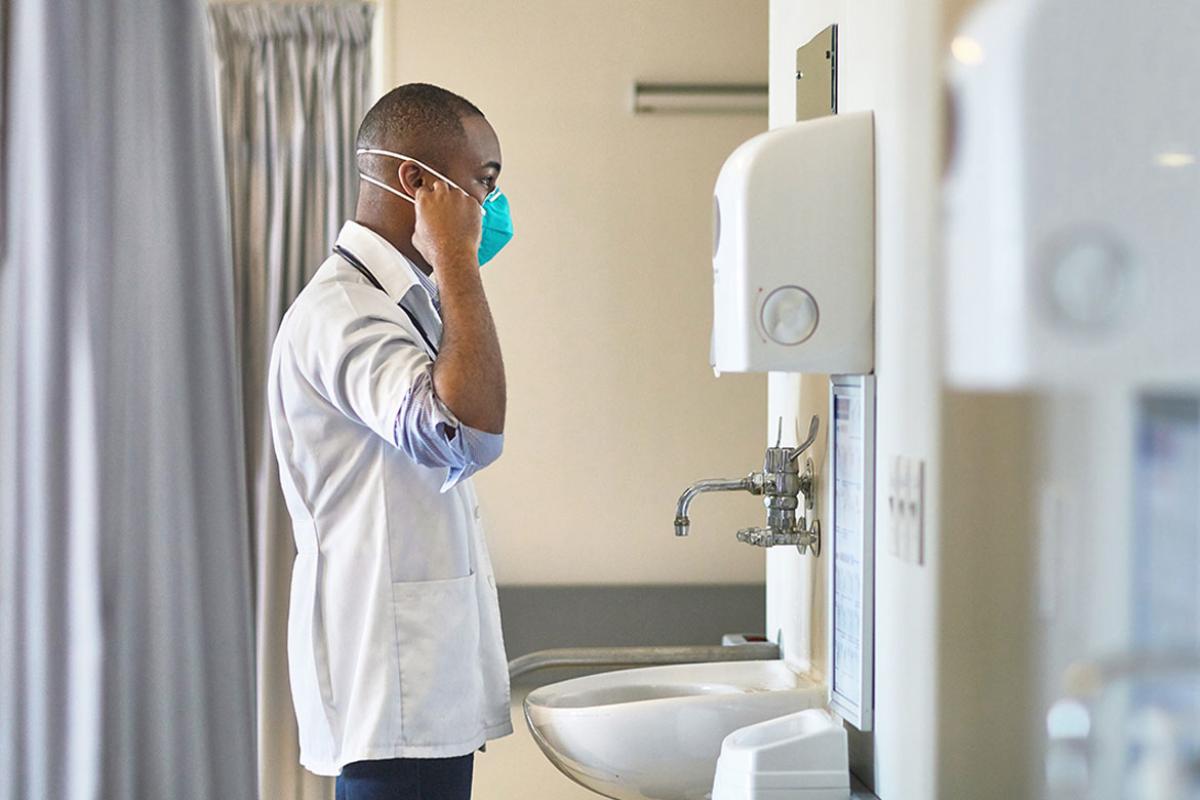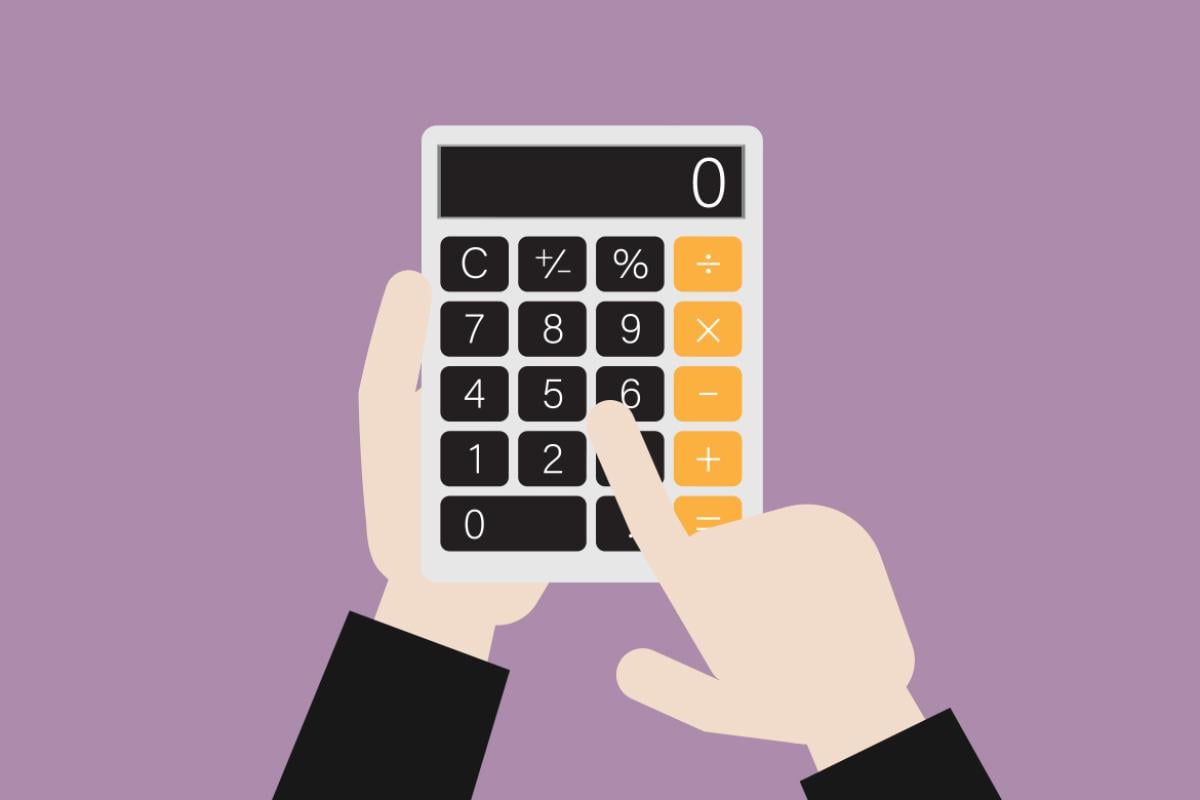Since Step 1 of the United States Medical Licensing Examination (USMLE) was switched to pass-fail scoring in 2022, the vast majority of medical students are passing the exam—about nine out of 10—on their first attempt. That represents, however, a slight dip from the pass rates in the years in which examinees were given a numerical score.
Is the dip cause for concern?
As long as medical students take the right steps to prepare, a veteran medical school faculty member says no.
The AMA offers essential tools and resources to support medical students in their preparation for the USMLE series of exams. To help you with your studies, AMA members receive a discount on test prep materials for the USMLE and the Comprehensive Osteopathic Medical Licensing Exams (COMLEX-USA).
“Students should approach Step 1 with a sense of confidence,” said AMA member Mark Meyer, MD. “The supermajority will pass the exam. If you are well prepared and have a good sense of where you stand going into the exam, there’s no reason to think you won’t be successful.”
So what separates the medical students who pass from those who don’t? Dr. Meyer outlines the key strategies students can use to stay on track and build the right foundation for success.
Understanding the dip
In 2021—the year prior to Step 1’s moving to pass-fail scoring—95% of first-time test takers from MD-granting medical schools and 94% from DO-granting schools passed Step 1. In the years since, that number has ranged from 91–93% for MD students and 86–89% for DO students.
What’s behind the decline? One simple answer is that the threshold for passing increased. When the exam went pass-fail in January 2022, the score required to pass moved from 194 to 196.
As senior associate dean for student affairs at the University of Kansas Medical Center, Dr. Meyer works directly with students on the Step 1 process. In the test cycle after the exam went pass-fail he noticed that at least some medical students took their foot off the gas when it came to test prep.
“I was very supportive of Step 1 going pass-fail because the emphasis on the exam was detrimental to student wellness,” Dr. Meyer said. “But I do think in the cycles immediately after the exam changed, student preparation changed and there might have been a different sense of urgency in preparation.”
“Students are very goal-oriented and when Step 1 was a three-digit score, they were competing for every point because it enhanced potentially their competitiveness for residency. In those days, it was said that a Step 1 score was the first filter for many residency programs.”
Other factors Dr. Meyer cited for the dip in pass rates include the impact the COVID-19 public health emergency had on learners across the board. He also mentioned a change in how students allocated their time during the years leading up to the exam—with extracurriculars such as research and service work occupying more bandwidth.
The University of Kansas School of Medicine is a member of the AMA UME Curricular Enrichment Program, which provides on-demand education through a micro-learning approach to help medical students distinguish themselves for residency and succeed in medicine. Educators can assign specific elements such as health care business fundamentals and developing leadership skills and receive reports on student progress, track via a dashboard, send reminder emails and customize reports. Schedule an introductory call now.
Dive deeper:
- 7 timeless tips for USMLE Step 1 study time
- How the switch to pass-fail scoring for USMLE Step 1 is going
- USMLE Step 1 FAQ: How, what to study to pass the exam
- When picking USMLE study resources, go with what works
The formula for success holds
In the aftermath of the exam’s move to pass-fail, the National Board of Medical Examiners reported that the amount of time students spent studying decreased.
Looking at the students he works with, Dr. Meyer said, “they are studying mightily.” He did offer that there may be a different perspective among those preparing for the exam.
“Students are starting to appreciate that it's not about just passing or what previously was the three-digit score. It's about building out your toolbox with information and knowledge that you ultimately grow in the upcoming years of med school,” he said.
In looking at how students should prepare, much has remained the same.
“It’s as true now as it was in the old system, reps matter,” Dr. Meyer said. “Doing practice questions is foundationally important. Not as a shortcut, but to get into the right training mode for what you're going to experience on the exam.
“There is a skill set that you need to perform well in your medical school classes, but there's also the nature of USMLE Step 1, which is an integrated exam. It pulls from multiple areas to assess if you understand the knowledge and if you can you make connections.”
The AMA Succeeding in Medical School series offers tips and other guidance on a wide range of critical topics, including preparing for the USMLE and COMLEX exams, navigating clinical rotations, publishing scientific research, and maintaining optimal health and wellness.
Dive deeper:
- USMLE high-yield topics—in the eye of the beholder?
- 4 keys to maintaining personal wellness during USMLE prep
- Why failing Step 1 shouldn’t end your dream of being a doctor
- After Step 1 shift, research experience is a watchword for Match
What puts you at risk of failing
Failing Step 1 on your first try doesn’t end your career in medicine, but it might limit your options. Some competitive specialties may filter out applicants with a failure on their transcript. Passing the exam is also required to advance in your training.
Looking at ways to minimize your risk of failing, Dr. Meyer said that performance in the preclinical phase of medical school is the first indicator to monitor.
“Your medical curriculum is the best predictor of success on Step 1,” he said. “We measure progress, and if you're not performing well in our curriculum, it's going to show on Step 1.”
Leading up to the exam, students should take note of performance on question blocks and practice exams. Those assessments are valuable data points.
“If the data isn’t reassuring, it’s really perilous to take the exam,” Dr. Meyer said.
If you are concerned about your chances of passing USMLE Step 1, contacting your school’s educational support office is a vital step. The professionals there might offer you tips on how to hone your prep as well as advice on potentially postponing the exam. Delaying is better than failing, but it should be done with a plan and support from your school.
“There’s pressure to take the test on a certain timeline because you don’t want to delay starting clerkships,” Dr. Meyer said. “Delaying puts you off track by four weeks or eight weeks, but if you fail step one, you're going to get pulled from rotations and be off track too. But if it results in your passing the exam, it’s worth it to you in the long run.”
As far as difficult standardized exams go, Step 1 is “a once-in-a-lifetime challenge,” Dr. Meyer said, while adding that that medical students have been down this type of road before.
“You took the SAT and/or ACT then the MCAT [Medical College Admission Test] and met the threshold to get into medical school,” he said. “Approach your exam date with a positive mental mindset. You are certainly capable of passing Step 1. It’s going to be hard, but you’ve done hard things before.”




